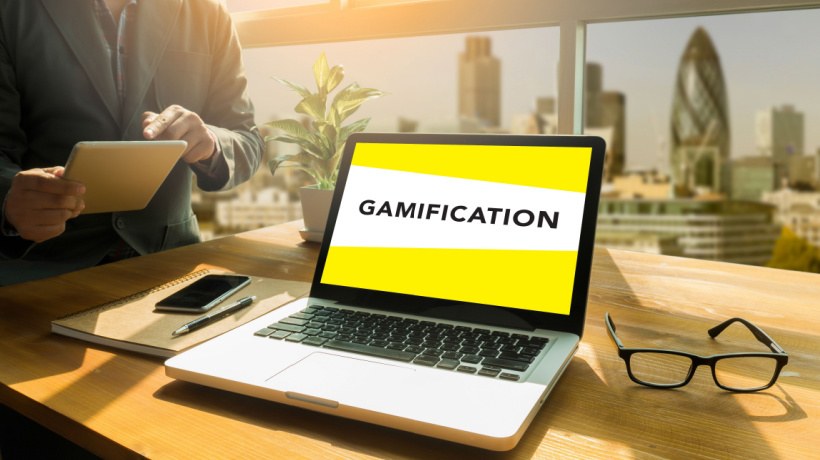Who Gets The Most Out Of Gamification In Training?
Companies that apply gamification in workplace training witness an increase in engagement and motivation. Levels, badges, leaderboards, and other incentives work well with most topics and all types of training content. Consider them the salt and pepper of employee education, if you like.
So we can all agree that gamification is an effective training pick-me-up employees respond positively to. But are the benefits of gamification valuable to some employees more than others? In short, yes. To find out more, read on. Below are the 6 teams that reap the most from gamification in training.
1. Sales Teams
It’s not a bias, it’s a fact: sales employees are competitive. Competition is an integral characteristic of the market economy. Therefore, salespeople couldn’t stand out, deliver results, or even survive if it wasn’t for their competitive nature.
Competitiveness is a driving force behind performance, and a personality trait without which they couldn’t withstand the stress of the job. In the context of gamified training, this trait works to your advantage. Competing against themselves or other branches is not only familiar but also utterly motivating for your salesforce.
Another way gamification for sales team training can help is by tapping into emotions. Let’s say you’ve designed a branching scenario on your LMS to test product knowledge or negotiation skills. If employee responses don’t meet your criteria, the system automatically deducts points. Naturally, they feel disappointed about losing some of the progress they had made. But this means they’ve learned a lot that sticks with them. Because they know that in real life, mistakes equal frustrating or losing a client.
2. Manufacturing Employees
Compliance training is a process that most employees must endure once or twice during their employment in a company. For manufacturing workers, it’s pretty much routine.
Gamification can engender motivation for repetitive or hard training topics, like compliance. Your main objective still remains to create engaging and easy-to-grasp content. However, gamification elements that reward participation besides progress can increase engagement with the course as a whole.
The frequency of compliance training makes manufacturing employees susceptible to cognitive overload. Here, too, gamification can help. You can lock each level so that employees have to successfully complete an assessment before they begin their next lesson. This minimizes the possibility of them moving too fast or without having understood what they’ve learned so far.
Additionally, the reward system helps them internalize procedures and adopt new behaviors, which is another key objective of compliance training. For example, reward them with points if their avatar follows the appropriate procedure for machine guarding. When they gather enough points, they can earn a badge. And if you demonstrate a video with the adverse consequences of non-compliance with every wrong answer, you’ll be more successful in making your point.
3. Healthcare Employees
Healthcare employees need gamification in training fundamentally for the same reasons as manufacturing workers do. Though a very different type of worker, healthcare employees also need to be up to date and abide by health and safety regulations. Therefore, continuous training is essential, but sometimes mentally overwhelming and tedious, for healthcare staff as well.
Apart from that, some healthcare employees, mostly nurses and doctors, are subject to stressful situations every day. Training shouldn’t be another source of stress, but—to the point that’s feasible—a pleasant distraction. Bringing in some game elements can make a huge difference in the way healthcare employees approach and experience training.
4. IT Department
Just like sales employees are known for their competitiveness, IT technicians are known for having a soft spot for most things computer-related, including games. Even if your IT department is not one that absolutely needs gamification, it sure is the employee team that will relish it the most.
Therefore, if you want to increase their motivation, create a course that resembles what’s most likely one of their favorite leisure activities. Don’t be afraid to go big here. Create an ultimate challenge and build up the tension as they move toward the end of the course.
5. Remote Employees
Applying gamification for remote workers is, if not essential, the wisest move you could make. Gamification solves two problems at once: it’s a non-intrusive way to both monitor employee progress and encourage it. That’s because, in a gamified course, progress translates into levels or leaderboard placement. These features serve to show you how far they’ve advanced and, at the same time, motivate them to keep learning.
What’s more, a sense of belonging is a feeling that remote employees often lack. Gamification provides an excellent opportunity to connect remote employees with the rest of the team. To do so, pair remote with in-house employees in challenges they must solve together. A common enemy—in this case, a competing team—is particularly effective in bringing people closer. Remote and in-house staff get to know each other in a less formal setting, build trust, and begin to communicate better.
6. New Employees
Though not exactly a team, it would be remiss not to mention how new employees benefit from gamification in training. Newcomers don’t expect more than a standard onboarding course that covers the usual training checklist. A gamified onboarding process will, therefore, be a pleasant surprise that will reduce the stress of the first days and impress them.
New employees, more than anyone, need to know that they’re doing well. Gamification rewards are the perfect way to give them indirect feedback and that much-needed reassurance. You can start small, with more trivial knowledge topics. For example, reward them with a badge for correctly identifying who is who in a simple game of flashcards.
Onboarding is where levels make the most sense as well. New hires can go from beginner level to advanced, as they move from basic knowledge to task mastery or certification acquisition. Measuring their achievements in levels, badges, etc., and viewing their progress unfold in a progress bar is most satisfying and encouraging.
Conclusion
Gamification in business training can succeed only with a strong partner in crime. For a comprehensive training experience, choose a gamification platform like TalentLMS, which allows you to employ every trick in the gamification book and so much more.










